Oct. 6
We were awoken at 5:30, served a practically inedible breakfast at 5:50, then headed back out to the Masai Marra at 6:30 for several more hours of tracking the "Big Five"
. We drove deep into the Preserve and it seemed as though Martin was tracking something as he appeared to keep looking at footprints in the muddy road. We stayed out for about three hours but, compared to the day before, didn't see nearly as many of the Big Five but lots of zebras, cape buffalos, impalas and some unusual looking large birds.
After our morning outing, we headed back to our lodgings to gather our things, then headed out for the long, very bumpy and agonizing drive to Lake Nakuru. It was nearly dusk by the time we arrived and were pleasantly surprised to find that we would be staying in a modest, but clean hotel for the evening, complete with wifi and a fairly decent hotel restaurant where we had our dinner.
In the morning, after…finally…a very filling and tasty breakfast, we headed out to explore Lake Nakuru National Park. Lake Nakuru, a small (it varies from 5 to 45 square kilometers) shallow alkaline lake is located on the southern edge of the town of Nakuru, about 164 kilometers north of Nairobi
. The lakes abundance of algae, the food supply for the flamingo, used to attract legions of them that famously lined the shore. We were disappointed, however, to have only sighted a small number far off in the distance.
The number of flamingos has been decreasing recently, perhaps due to too much tourism, pollution, resulting from industries waterworks nearby who dump waste into the waters, or simply because of changes in water quality which makes the lake temporarily inhospitable to the flamingo population and has caused them, more recently, to migrate to other Lakes.
Because of the recent and extensive rainfall, many of the roads were impassable, making it difficult to enter areas where we would have had a better chance of seeing many of the other animals that inhabit the Nakuru Park like the Masai lions, cheetahs and leopards as well as both the eastern black rhino and the southern white rhinos. We did see, however, numerous giraffes, waterbucks, zebras and large gatherings of baboons as well as many of the local birds
.
The abundance of animals, we were fortunate enough to have seen in the Masai Mara, made up for the limited number of sightings at Lake Nakuru but, even with the lack of wildlife, the expansive savannahs that we drove through were stunning and stopping along the lakeshore provided a sense of both eeriness and serenity.
After several hours, we started the return drive to Nairobi, stopping along the way for lunch where we watched a demonstration of one of the local carvers. We arrived back at our hotel, early evening, had a delightful dinner in the rooftop hotel restaurant, then retired for the evening.
The next day, we ventured out to explore our neighborhood and to visit the Nairobi National Museum. On the way to the Museum, we wandered through streets lined with vendors selling fruits and vegetables and all sorts of items from shoes to clothing, housewares and videos, many spread out on the dusty ground
. We walked a few miles and finally arrived at the National Museum with its wide range of cultural and natural history exhibits.
When we entered the museum, we were greeted by a huge and impressive calabash sculpture comprised of individual calabash, many with intricate designs, representing each of the numerous tribes of Kenya. Next, we walked into the Great Hall of Mammals, the first of the museum’s permanent collections. This is where the majestic Ahmed the Elephant is displayed standing with numerous other stuffed mammals representing many of the animals we had just seen on our safari. The displays in this collection are well laid out, showing how the mammal family branches out, from manatees to elephants and shrews, to dolphins and cheetahs and many more.
The next permanent collection we visited was the Cradle of Humankind exhibition, the highlight of which is the Hominid Skull Room. This extraordinary collection of skulls describes itself as 'the single most important collection of early human fossils in the world’
. The highlight of the exhibit is Turkana Boy, a nearly complete skeleton of a hominin youth who lived during the early Pleistocene. Discovered in 1984 by Kamoya Kimeu, a member of a team led by Richard Leakey, at Nariokotome near Lake Turkana in Kenya, this specimen is the most complete early human skeleton ever found and is believed to be between 1.5 and 1.6 million years old.
Another exhibit on the first floor is the Cycles of Life room, rich in ethnological artefacts from Kenya’s various tribes and ethnic groups. Upstairs, the Historia Ya Kenya display is an engaging journey through Kenyan and East African history. However, being a bird lover, I think my favorite collection was the Birds of East Africa exhibit….a huge gallery of at least 900 stuffed specimens. The display cases were beautifully arranged with birds of all sizes, shapes and colors and some of the most bizarre birds I’ve ever seen.
After a really enjoyable day, we went back to the hotel, had another lovely dinner on the rooftop and then packed up as we would be flying to Malindi in the morning where we would be spending a week at our next home exchange in the little village of Dabaso.
MORE SAFARI THEN BACK TO NAIROBI
Friday, October 06, 2017
 Lake Nakuru National Park, Nakuru, Kenya
Lake Nakuru National Park, Nakuru, Kenya
Other Entries
-
39MYSTERY OF THE MISSING LUGGAGE
Sep 10391 days prior Istanbul, Turkeyphoto_camera5videocam 0comment 1
Istanbul, Turkeyphoto_camera5videocam 0comment 1 -
40SENSORY OVERLOAD
Sep 11390 days prior Istanbul, Turkeyphoto_camera31videocam 0comment 9
Istanbul, Turkeyphoto_camera31videocam 0comment 9 -
41TAKSIM SQUARE AND THE POTATO SEARCH
Sep 12389 days prior Istanbul, Turkeyphoto_camera34videocam 0comment 3
Istanbul, Turkeyphoto_camera34videocam 0comment 3 -
42MAYBE THIS IS WHAT IT LOOKS LIKE ON THE MOON
Sep 13388 days prior Nevsehir, Turkeyphoto_camera29videocam 1comment 6
Nevsehir, Turkeyphoto_camera29videocam 1comment 6 -
43DAY TWO - CAPPADOCIA
Sep 14387 days prior Nevsehir, Turkeyphoto_camera32videocam 0comment 5
Nevsehir, Turkeyphoto_camera32videocam 0comment 5 -
44LAST TWO DAYS IN ISTANBUL
Sep 15386 days prior Istanbul, Turkeyphoto_camera29videocam 0comment 3
Istanbul, Turkeyphoto_camera29videocam 0comment 3 -
45CAIRO AND OUR FABULOUS NILE RIVER CRUISE
Sep 17384 days prior Cairo, Egyptphoto_camera24videocam 0comment 5
Cairo, Egyptphoto_camera24videocam 0comment 5 -
46OUR NILE EXCURSION CONTINUES
Sep 19382 days prior Luxor, Egyptphoto_camera35videocam 0comment 6
Luxor, Egyptphoto_camera35videocam 0comment 6 -
47VALLEY OF THE KINGS
Sep 20381 days prior Luxor, Egyptphoto_camera34videocam 0comment 8
Luxor, Egyptphoto_camera34videocam 0comment 8 -
48EDFU AND KOM OMBO
Sep 21380 days prior Aswān, Egyptphoto_camera36videocam 0comment 5
Aswān, Egyptphoto_camera36videocam 0comment 5 -
49OUR LAST FULL DAY ON THE NILE EXCURSION
Sep 22379 days prior Aswān, Egyptphoto_camera32videocam 0comment 4
Aswān, Egyptphoto_camera32videocam 0comment 4 -
50THE AIRPORT FIASCO
Sep 23378 days prior Addis Ababa, Ethiopiaphoto_camera23videocam 0comment 4
Addis Ababa, Ethiopiaphoto_camera23videocam 0comment 4 -
51THE MESKEL FESTIVAL
Sep 26375 days prior Addis Ababa, Ethiopiaphoto_camera29videocam 4comment 1
Addis Ababa, Ethiopiaphoto_camera29videocam 4comment 1 -
52THE ASTOUNDING CHURCHES OF LALIBELA
Sep 28373 days prior Lalibela, Ethiopiaphoto_camera42videocam 0comment 2
Lalibela, Ethiopiaphoto_camera42videocam 0comment 2 -
53OUR NEW SON
Sep 29372 days prior Lalibela, Ethiopiaphoto_camera39videocam 1comment 4
Lalibela, Ethiopiaphoto_camera39videocam 1comment 4 -
54BACK TO ADDIS ABABA
Sep 30371 days prior Addis Ababa, Ethiopiaphoto_camera30videocam 3comment 2
Addis Ababa, Ethiopiaphoto_camera30videocam 3comment 2 -
55FINALLY.....THE ANIMALS!!!!
Oct 03368 days prior Nairobi, Kenyaphoto_camera51videocam 2comment 6
Nairobi, Kenyaphoto_camera51videocam 2comment 6 -
56MORE SAFARI THEN BACK TO NAIROBI
Oct 06 Lake Nakuru National Park, Kenyaphoto_camera35videocam 0comment 1
Lake Nakuru National Park, Kenyaphoto_camera35videocam 0comment 1 -
57FABULOUS HOME EXCHANGE IN DEBASO, KENYA
Oct 093 days later Malindi, Kenyaphoto_camera29videocam 0comment 5
Malindi, Kenyaphoto_camera29videocam 0comment 5 -
58UNWINDING IN PARADISE
Oct 104 days later Watamu, Kenyaphoto_camera25videocam 0comment 3
Watamu, Kenyaphoto_camera25videocam 0comment 3 -
59THE GEDI RUINS
Oct 126 days later Gede, Kenyaphoto_camera12videocam 0comment 0
Gede, Kenyaphoto_camera12videocam 0comment 0
Comments
2025-05-22
Comment code: Ask author if the code is blank

 Lake Nakuru National Park, Nakuru, Kenya
Lake Nakuru National Park, Nakuru, Kenya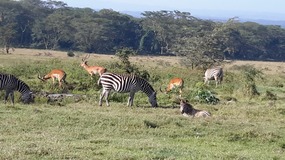
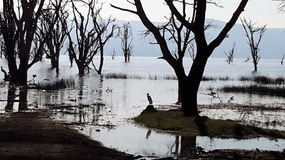
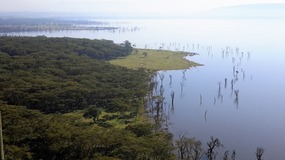
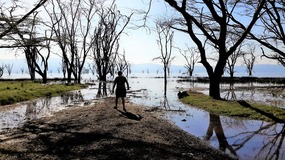
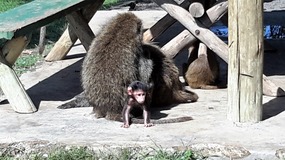
















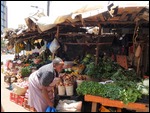

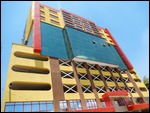
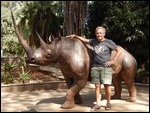


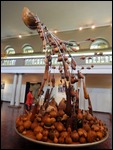
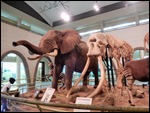


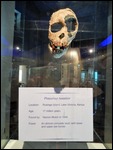




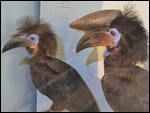


Annie
2017-04-27
Nice work my dear..great info..fascinating..Glad you are keeping going..want to see all thusxxxxxx